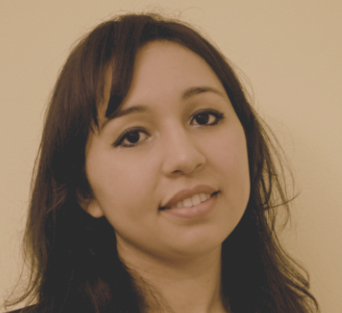- Acne
- Actinic Keratosis
- Aesthetics
- Alopecia
- Atopic Dermatitis
- Buy-and-Bill
- COVID-19
- Case-Based Roundtable
- Chronic Hand Eczema
- Chronic Spontaneous Urticaria
- Drug Watch
- Eczema
- General Dermatology
- Hidradenitis Suppurativa
- Melasma
- NP and PA
- Pediatric Dermatology
- Pigmentary Disorders
- Practice Management
- Precision Medicine and Biologics
- Prurigo Nodularis
- Psoriasis
- Psoriatic Arthritis
- Rare Disease
- Rosacea
- Skin Cancer
- Vitiligo
- Wound Care
Article
Art, renaissance, circus acts and skin at the 24th World Congress of Dermatology
Author(s):
Take a journey with Dr. Chacon as she describes her experience at the 24th World Congress of Dermatology this year in Milan.
Dr. Chacon

The 24th World Congress of Dermatology is an international conference hosted by the International League of Dermatological Societies and takes place in a unique location every four years. The first large-scale international gathering for dermatology began in 1889 in Paris, France. Since then, it has been held 23 times under the auspices of the International League of Dermatological Societies (ILDS), which is made up of 180 global dermatological societies. In the past it has been hosted in Vancouver, Seoul, Sydney, Buenos Aires, Berlin, Tokyo, Mexico City, Washington, Padua-Venice, Stockholm, London, Copenhagen, New York and London.
This year, the meeting was hosted in Milan June 10-15, 2019. The Italian Society of Dermatology (SIDeMaST) served as a co-host to bring Italian hospitality and a warm welcome to one of the world’s largest dermatology congresses to celebrate skin health around the world.
READ MORE: Dr. Chacon's experience at the 14th World Congress of Cosmetic Dermatology
Milan was an excellent choice given its rich heritage, which dates back to when it served as the capital of the Roman Empire. It is known for its gorgeous buildings from the Renaissance and gothic eras, as well as its preservation of Leonardo da Vinci’s “Last Supper” and the iconic Vitruvian man. Today it serves as a dynamic, industrial city and is an internationally recognized capital for fashion design, arts and sciences.
The highlight of my experience was getting to visit Milan’s Historical Dermatologic Clinic (Clinica Dermatologica), where the 4th Abraham Buschke Lecture, “Dermatology at the Circus,” was held in the amphitheater and given by Carlo Gelmetti, M.D., Ph.D., of the department of pediatric dermatology at Ospedale Maggiore Policlinico, University of Milan, Milano, Italy.
There were many historical moulages around the lecture hall and clinic, many of which were hundreds of years old and have been very well preserved behind glass vitrines. I learned that, before photos, lifelike moulages were one of the few ways medical students and residents could visually learn and understand the characteristics of rare dermatological diseases such as leprosy, connective tissue diseases and cutaneous tuberculosis.
The lecture discussed circuses and its performers with a dermatologic twist. For example, many circus performers suffer from dermatologic ailments, genetic disorders and congenital anomalies such as congenital hypertrichosis lanuginosa.
“Bearded ladies” who participated in the circus sideshows of the 19th and 20th centuries often had hirsutism as a result of a hormonal imbalance or a genetic predisposition to hypertrichosis.
“Human alligators” or “crocodile boys” had different variants of ichthyosis, a group of cutaneous disorders that often begins at or shortly after birth and causes extremely dry, thick and scaly skin that resembles fish scales.
For decades, it was thought that Joseph Merrick, known as the “Elephant man,” had suffered from neurofibromatosis type 1; however, geneticists Tibbles and Cohen demonstrated in 1986 that he actually had Proteus syndrome, a much rarer condition.
The “tree man” suffered from epidermodysplasia verruciformis, an extremely rare condition in which warts caused by the human papillomavirus continue to grow on one’s extremities and is associated with a high risk of skin cancer.
Piebaldism afflicted those characters known as “leopard boy” or “leopard girl,” which is characterized by the absence of melanocytes in certain areas of the skin and hair.
Ehlers-Danlos syndrome tends to affect people who are exceptionally flexible, such as circus performers, gymnasts, dancers and contortionists, as these patients have highly elastic joints, flexible extremities and stretchy, rubbery skin.
Lastly, an interesting fact related to hair was that, in some circuses, individuals hang by their hair. Hair hanging is a trick in which someone is suspended by their hair and swung around in the air, often while performing other tricks. Although we may think of the hair as being weak and easily snapped, it has an incredibly strong tensile strength, with a relative weight limit of 100 grams per strand. With about 150,000 follicles on the average person’s scalp, the combined strength of a head of hair is incredible; thus, it actually is possible for a head of human hair to support the person’s entire weight. As you might expect, haircare and maintenance is of utmost importance when it comes to hanging by the hair for dozens or even hundreds of shows a year.
As a whole, the World Congress of Dermatology focused on major breakthroughs and advances, ranging from clinical practice to research, technology and innovation. The event brought together thousands of international dermatologists to share their professional experiences, knowledge and skills for the goals of improving patient care. In addition, the ILDS is involved in many global projects and humanitarian work for the International Foundation of Dermatology.
At the conclusion of the event, Singapore was selected as the host city for the 2023 World Congress of Dermatology.
The World Congress of Dermatology was one of my favorite dermatology conferences, and I look forward to many more to come.
Newsletter
Like what you’re reading? Subscribe to Dermatology Times for weekly updates on therapies, innovations, and real-world practice tips.











